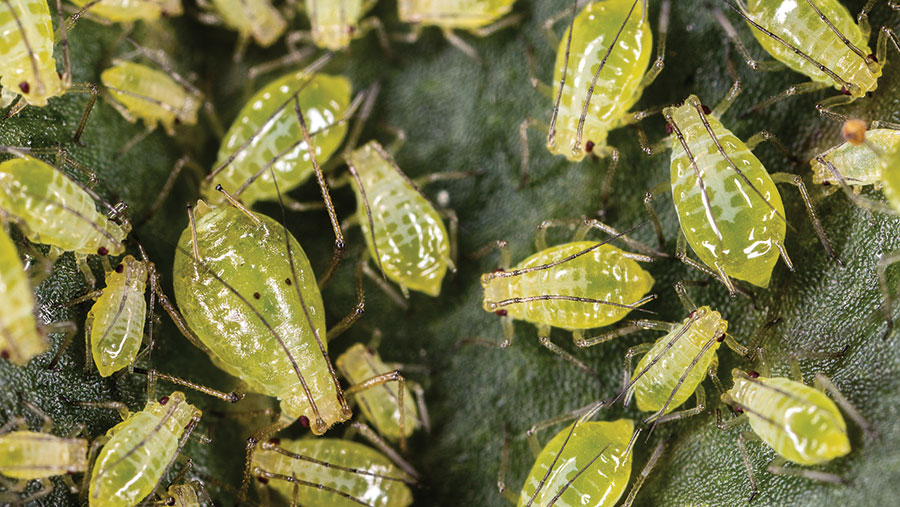Alerts a vital tool in pest and disease control this spring
 © Blackthorn Arable
© Blackthorn Arable Signing up to AHDB’s pest and disease alerts may prove vital this spring, as the mild winter is having an effect on disease levels and resulting in a much earlier threat from disease-carrying aphids.
And as the oilseed rape crop is about to enter its critical flowering period, the AHDB is also set to launch its sclerotinia infection risk alerts service.
See also: How to manage ramularia without chlorothalonil
Earlier aphids
Long-term aphid data (from the suction-trap network) and weather data (Met Office and others) is used to forecast the date of the first aphid flights, as well as aphid abundance in spring and early summer.
The best predictor of the timing and size of aphid migration is the mean air temperature in January and February, which this year was higher than the 30-year mean.
Therefore, in the absence of abnormal cold spells this spring, the AHDB is forecasting that aphids will fly about one to three weeks earlier in Scotland and northern England and about four weeks earlier over much of the rest of England (south of the Wash).
Farmers can use the AHDB’s regular aphid news bulletins to better time any insecticide sprays. This includes spraying cereals to manage barley yellow dwarf virus and tackle virus yellows in sugar beet.
Aphid alerts
Sign up online for the aphid alerts, which run typically April to November.
Sclerotinia forecasts
Each spring, warm (>10C), moist soils cause Sclerotinia sclerotiorum to develop brown spore-releasing structures on the soil. Carried by the wind, the spores can land on oilseed rape plants, feed on petals and germinate.
The risk alerts service highlights areas of the UK where conditions are, or are forecast to be, suitable for the sclerotinia pathogen to infect crops.
Typically, the optimum time for a single spray is just before mid-flowering on the main raceme and, since fungicides have protectant activity, they should be applied before an infection risk alert.
Growers can better time their sprays by signing up the AHDB alert to gain the latest warnings for their area.
Sclerotinia forecasts
Access the online sclerotinia risk alerts during the main flowering period.

